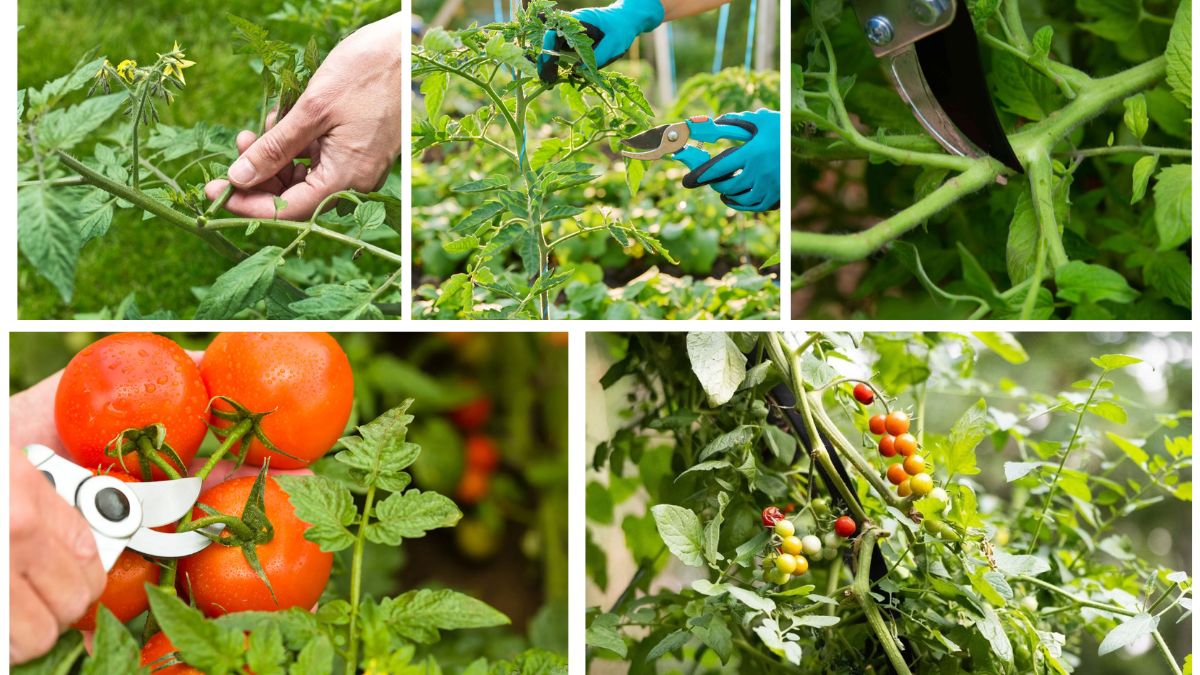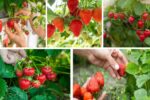Tomatoes are among the most popular crops in home gardens because they are versatile, delicious, and rewarding to grow. However, many gardeners find that their plants produce lots of leaves but not enough fruit. The key to solving this problem lies in one essential practice—pruning. Correct pruning not only helps improve air circulation and prevent disease, but it also directs the plant’s energy into producing larger, juicier tomatoes.
In this guide, we will cover everything you need to know about pruning tomato plants correctly for bigger harvests, including why pruning matters, when to prune, step-by-step pruning techniques, and helpful tips for both determinate and indeterminate tomato varieties.
Why Pruning Tomato Plants Matters
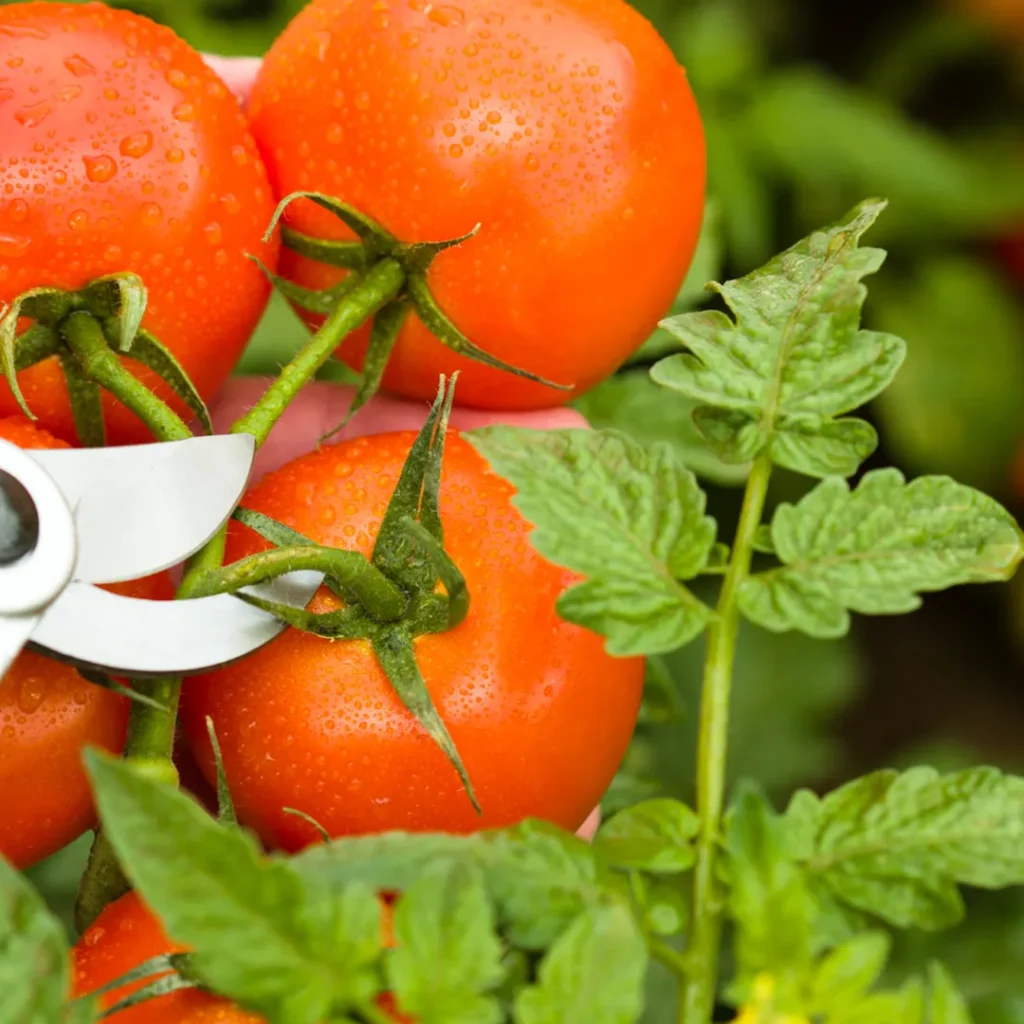
Pruning is the process of selectively removing stems, leaves, and suckers from tomato plants to control their shape and direct their growth. While some new gardeners may hesitate to cut back their plants, proper pruning provides several benefits:
- Improved Air Circulation – Pruning reduces dense foliage, allowing air to flow more freely around the plant. This lowers the risk of fungal diseases like blight and powdery mildew.
- Healthier Plants – Removing unnecessary stems ensures that nutrients are directed to fruit production rather than excessive leaf growth.
- Better Sunlight Penetration – Pruned plants allow sunlight to reach more areas, helping tomatoes ripen evenly.
- Bigger, Better Fruit – By controlling growth, the plant puts more energy into fewer fruits, which results in larger, more flavorful tomatoes.
- Ease of Maintenance – Pruned plants are easier to stake, tie, and harvest.
Without pruning, tomato plants can become tangled and bushy, leading to overcrowding, smaller fruits, and greater susceptibility to pests and diseases.
Understanding Tomato Plant Types
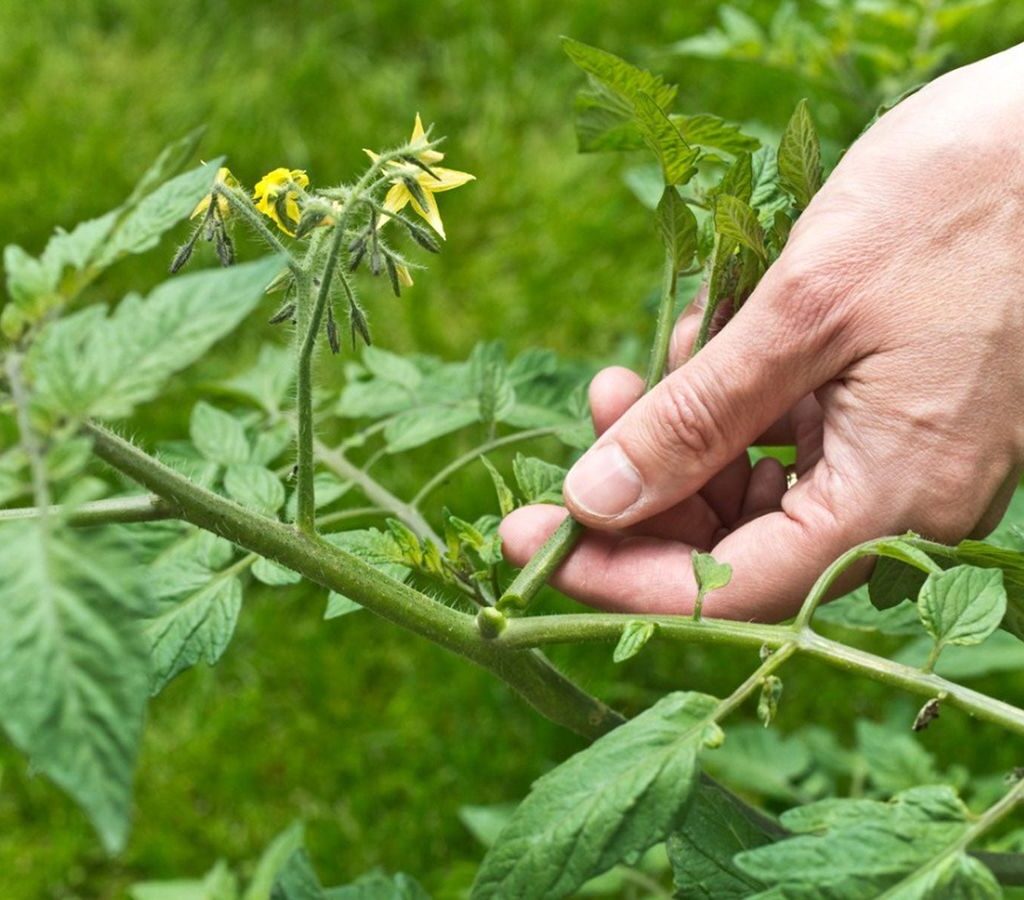
Before you start pruning, it’s important to know the difference between determinate and indeterminate tomato varieties:
- Determinate (Bush) Tomatoes: These grow to a certain size, set fruit within a short window, and then stop growing. They require minimal pruning since removing too many stems can reduce yield.
- Indeterminate (Vining) Tomatoes: These grow continuously throughout the season and produce fruit until frost. They benefit greatly from pruning, as it helps control excessive vine growth and increases fruit size.
Knowing your plant type ensures you prune correctly without accidentally harming your harvest potential.
When to Start Pruning Tomato Plants
Timing is critical for successful pruning. The best time to start pruning is when:
- Plants are 12–18 inches tall.
- The first flower clusters appear.
- Lower leaves begin to touch the soil.
From this stage onward, pruning should be a regular part of plant care, done every 7–10 days throughout the growing season.
Tools Needed for Pruning
To prune effectively, you’ll need the following tools:
- Pruning shears or scissors (clean and sharp)
- Gloves (to protect hands from sap irritation)
- Alcohol wipes (to sterilize tools and prevent spreading disease)
For smaller suckers and stems, you can even pinch them off with your fingers.
Step-by-Step Guide to Pruning Tomato Plants
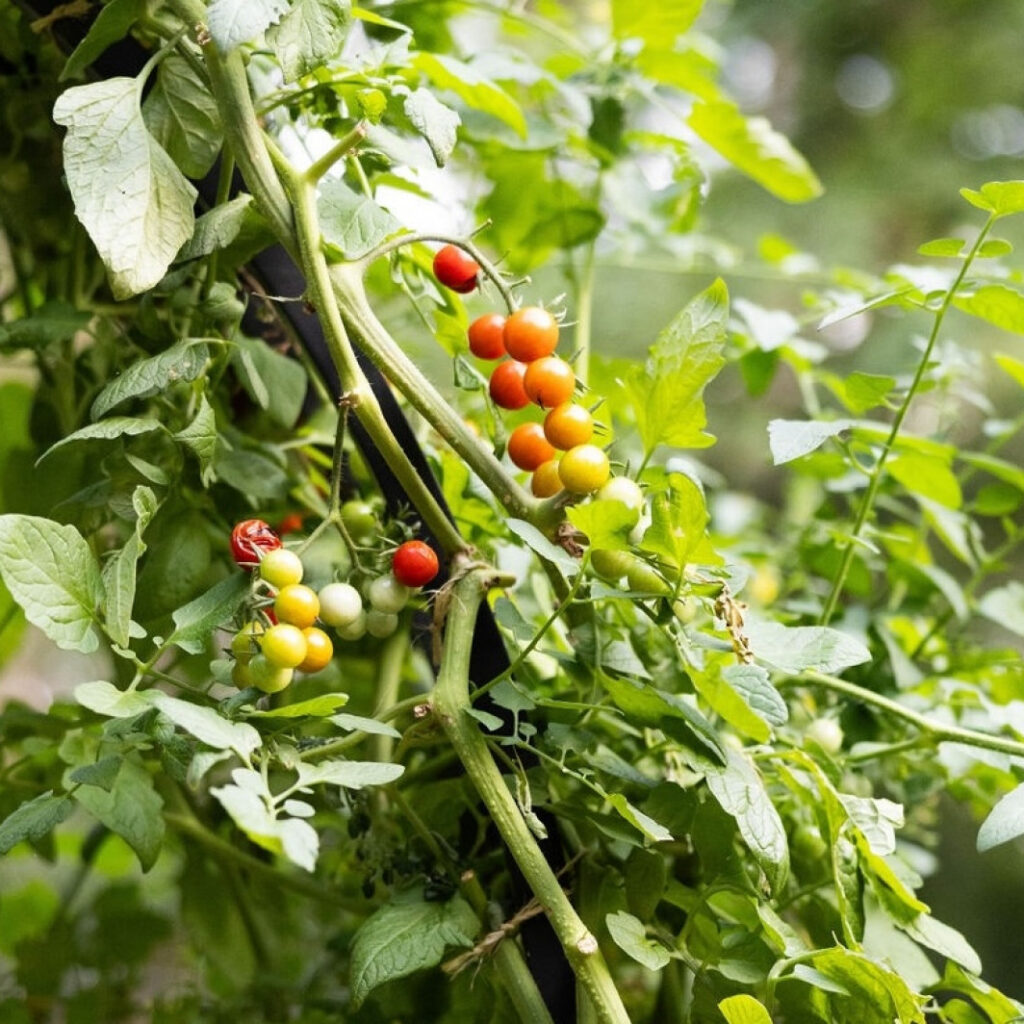
Step 1: Remove Lower Leaves
Start by cutting off the lower leaves that touch the soil or are within 6–8 inches of the ground. These leaves are most likely to be splashed with soil-borne diseases like early blight. Removing them improves airflow and reduces disease risk.
Step 2: Identify and Remove Suckers
Suckers are small shoots that grow in the leaf axils (the space between the main stem and a branch). If left unchecked, suckers grow into full stems, making the plant bushier and less productive.
- For indeterminate varieties, remove most suckers to encourage strong fruiting.
- For determinate varieties, limit sucker removal to avoid reducing yield.
Simply pinch small suckers with your fingers or use shears for larger ones.
Step 3: Prune to a Single or Double Stem (Optional)
Some gardeners prefer to train indeterminate tomatoes to one or two main stems. This method maximizes fruit size and makes staking easier. To do this:
- Choose the strongest main stem and remove competing ones.
- For a two-stem system, keep one main stem plus one strong sucker below the first flower cluster.
Step 4: Remove Yellowing or Diseased Leaves
Throughout the season, watch for yellowing, wilted, or spotted leaves and prune them promptly to prevent disease spread. Always dispose of infected leaves away from your garden.
Step 5: Top the Plant (End of Season)
Toward the end of the growing season (4–6 weeks before the first expected frost), prune the top of the plant by cutting the growing tip. This practice, called topping, stops new leaf and stem growth so the plant focuses on ripening existing fruits.
Special Considerations for Different Tomato Varieties
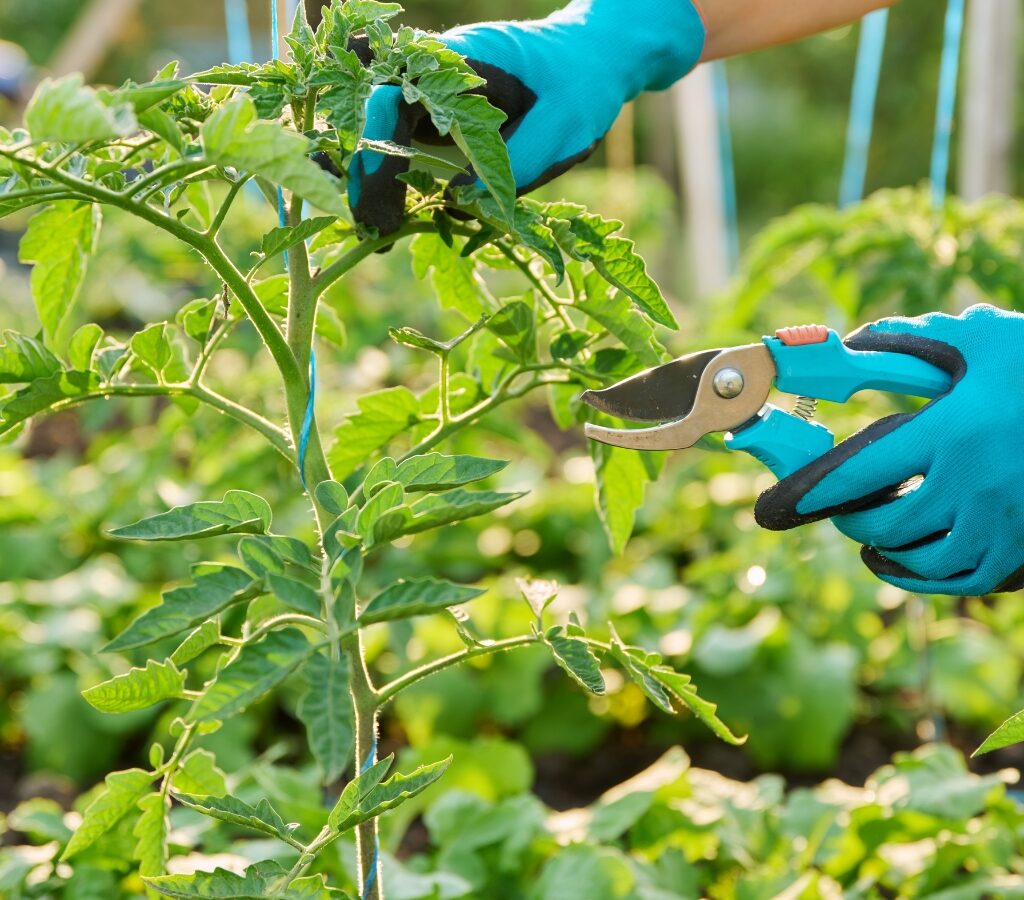
Pruning Indeterminate Tomatoes
- Prune regularly to maintain a manageable size.
- Focus on removing suckers and keeping 1–2 main stems.
- Stake, cage, or trellis the plant for support.
Pruning Determinate Tomatoes
- Limit pruning to removing lower leaves and the occasional sucker.
- Avoid over-pruning, as it reduces overall yield.
- Cage support is often better than staking for bush varieties.
Common Mistakes to Avoid
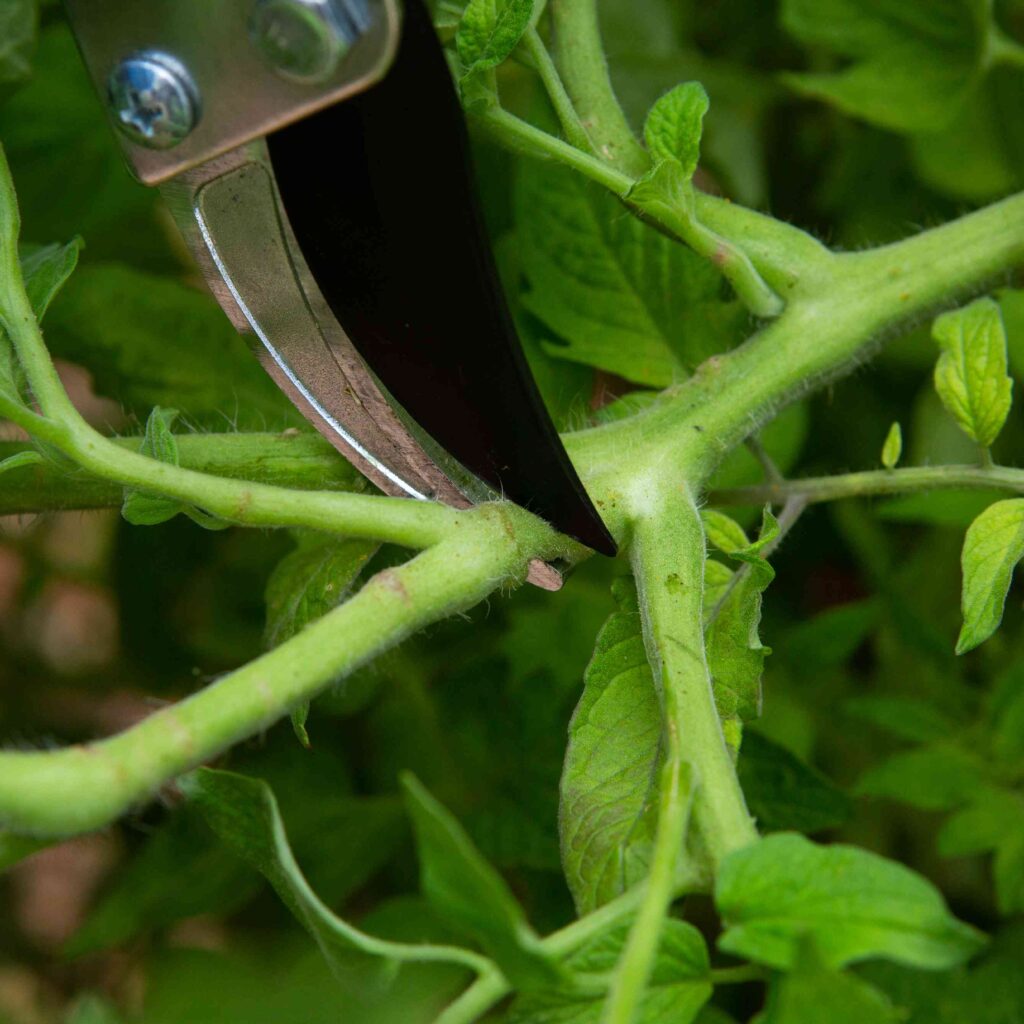
While pruning is beneficial, mistakes can hinder growth. Avoid these errors:
- Over-pruning – Removing too many leaves reduces photosynthesis, stunting growth.
- Pruning too late – Waiting until plants are too large makes pruning stressful for the plant.
- Using dirty tools – Unclean shears can spread plant diseases.
- Ignoring variety type – Pruning determinate tomatoes too much lowers fruit production.
- Removing all suckers – Some suckers can be left to balance growth and yield.
Additional Tips for Maximizing Tomato Harvests
- Mulch around plants to keep soil moisture consistent and prevent soil-borne diseases.
- Water at the base instead of overhead to reduce fungal issues.
- Fertilize appropriately with a balanced tomato fertilizer (high in phosphorus and potassium).
- Use stakes, cages, or trellises to support pruned plants and prevent fruit from touching the ground.
- Rotate crops yearly to avoid disease buildup in the soil.
Conclusion
Pruning tomato plants may seem intimidating at first, but with the right technique, it becomes a simple and rewarding task. By removing lower leaves, controlling suckers, and training plants to one or two main stems, you’ll create healthier, more productive tomato plants. The result is not only a bigger harvest but also larger, tastier fruits that make all your gardening efforts worthwhile.
Whether you are growing a small container tomato on your balcony or managing a full backyard garden, proper pruning ensures your plants reach their full potential. With consistency, attention, and a little practice, you’ll master the art of pruning and enjoy a season filled with juicy, homegrown tomatoes.
